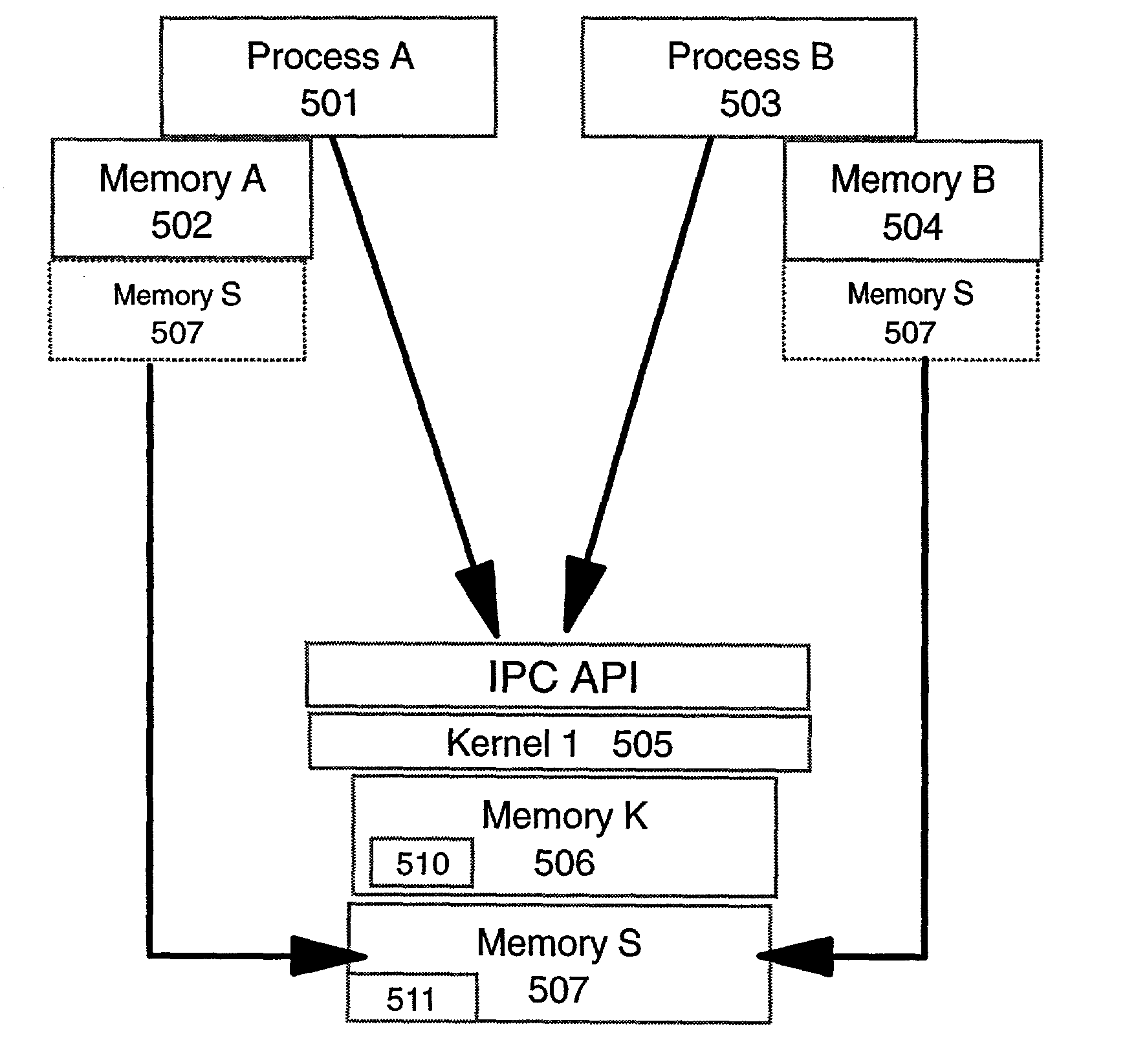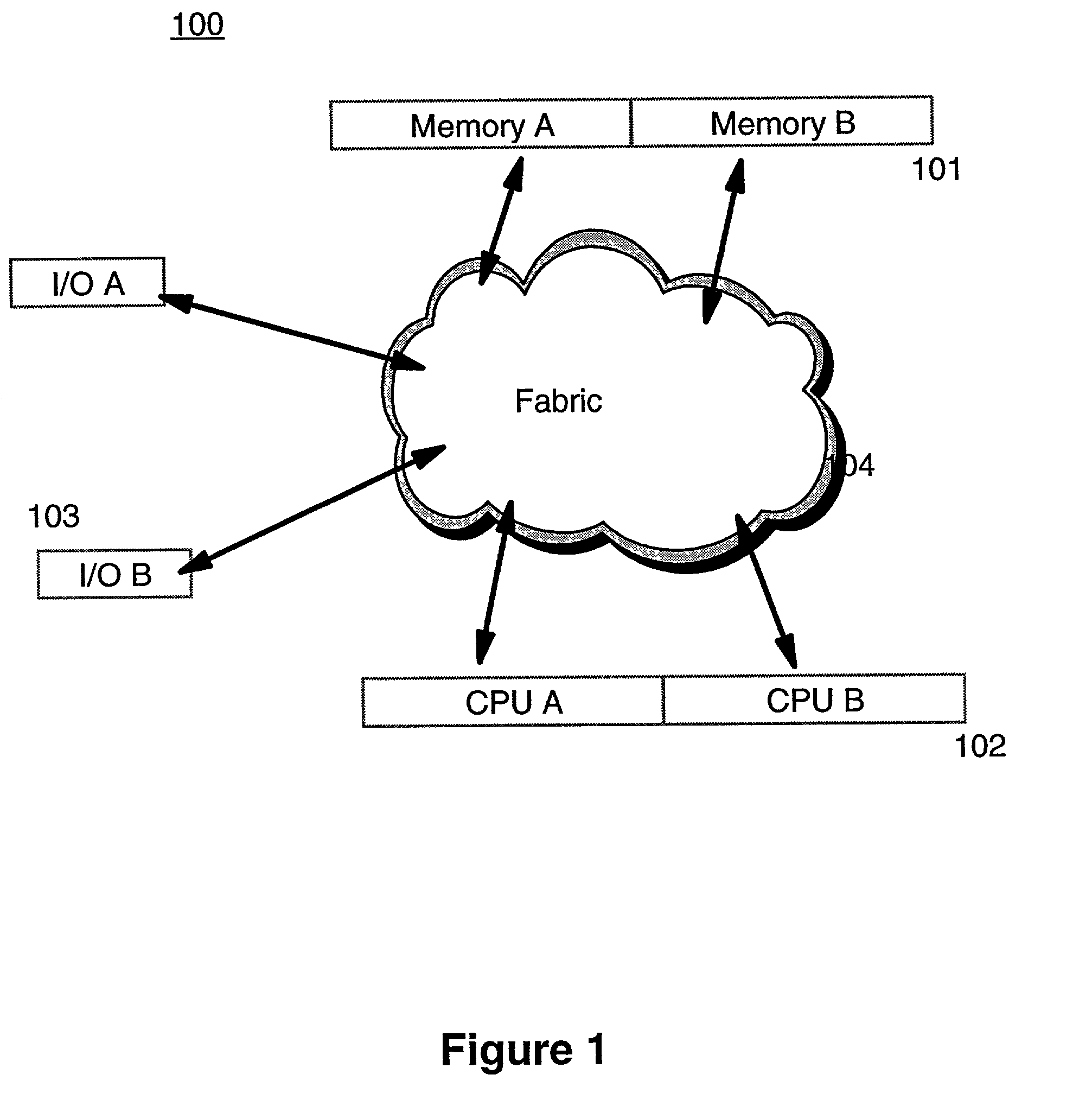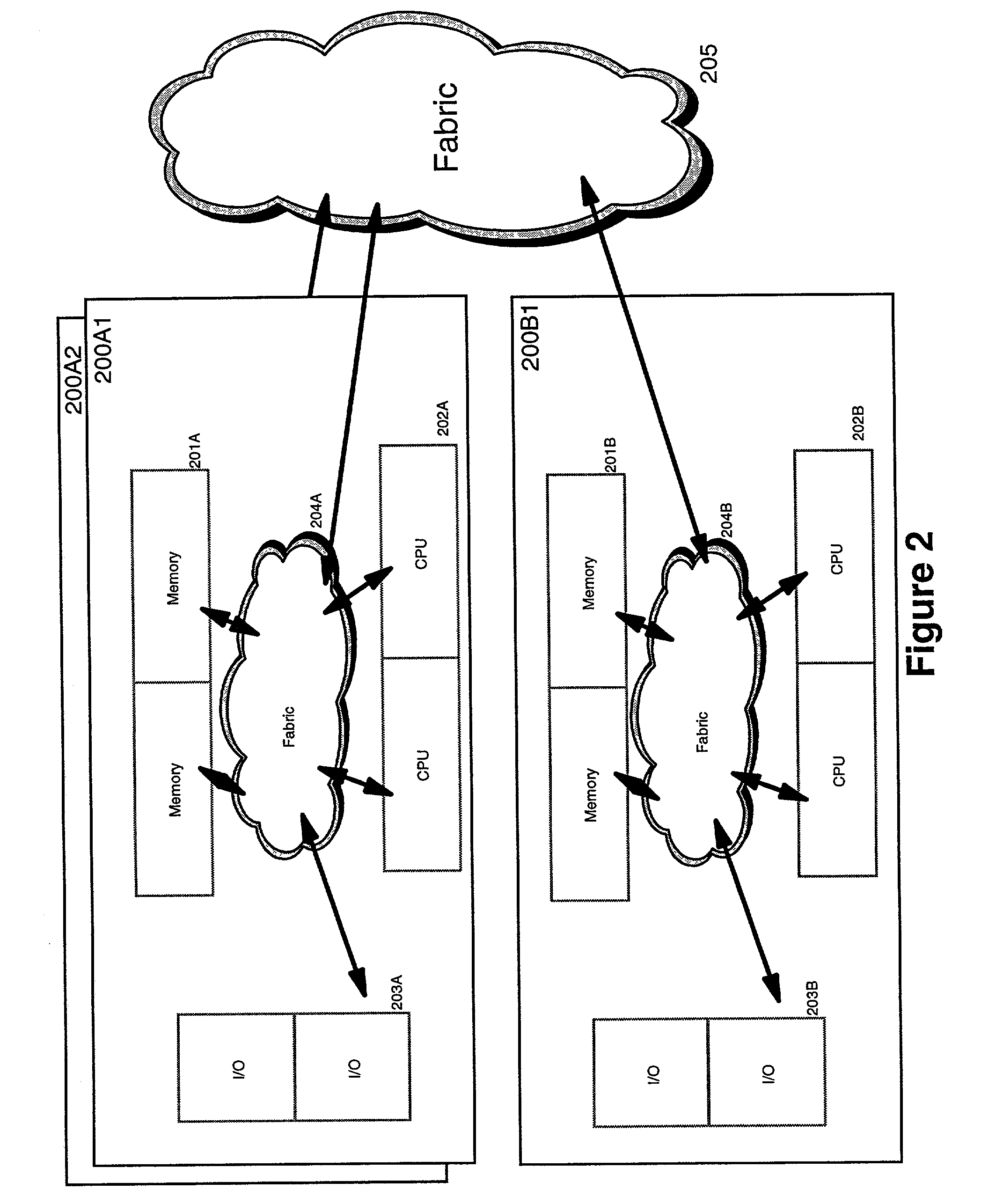Inter-partition message passing method, system and program product for a shared I/O driver
a message passing and inter-partition technology, applied in the field of partitioned data processing systems, can solve the problems of not offering a straightforward mechanism for functionally integrating heterogeneous or homogeneous partitioned platforms into a single inter-operable partitioned system, not adequately addressing the need for inter-operability between the operating systems residing within the partitioned systems of the server, and typically not addressing the type of inter-partition resource, so as to facilitate data movemen
- Summary
- Abstract
- Description
- Claims
- Application Information
AI Technical Summary
Benefits of technology
Problems solved by technology
Method used
Image
Examples
first embodiment
[0072] In the referenced invention the definition and allocation tables for the shared storage are set up in memory by a stand alone utility program called Shared Memory Configuration Program (SMCP) (612) which reads data from a Shared Memory Configuration Data Set (SMCDS) (613) and builds the table in segment S1 (610) of Memory S (609). Thus, the allocation and definition of which kernels share which segments of storage is fixed and predetermined by the configuration created by the utility. The various kernel extensions then use the shared storage to implement the various inter-image, inter-process communication constructs, such as pipes, message queues, sockets and even allocating some segments to user processes as shared memory segments according to their own conventions and rules. These inter-process communications are enable through IPC APIs 618 and 619.
[0073] The allocation table for the shared storage contains entries which consist of image identifiers, segment numbers, gid, ...
second embodiment
[0136] A user requests authorization. The security client (1603) receives a password from the user. The security client puts the request in a memory location accessible to the security server (1610) and signals that it has done so. A "security daemon" in the first partition (1614) recognizes the signal and starts a "proxy" client (1616) in the first partition (1614). The proxy (1616) client calls the security server with the request using the interface native to the security server (1601). The security server (1601) processes the request and returns the servers response to the proxy client (1616). The proxy client puts the security server's response in memory accessible to the security client in the second partition and signals that it has done so. The signal wakes up the security client (1603) pointing to the authorization. The security client (1603) passes the response back to the user. In one embodiment, the security client (1603) in the second partition (1615) communicates with ...
PUM
 Login to View More
Login to View More Abstract
Description
Claims
Application Information
 Login to View More
Login to View More - R&D
- Intellectual Property
- Life Sciences
- Materials
- Tech Scout
- Unparalleled Data Quality
- Higher Quality Content
- 60% Fewer Hallucinations
Browse by: Latest US Patents, China's latest patents, Technical Efficacy Thesaurus, Application Domain, Technology Topic, Popular Technical Reports.
© 2025 PatSnap. All rights reserved.Legal|Privacy policy|Modern Slavery Act Transparency Statement|Sitemap|About US| Contact US: help@patsnap.com



